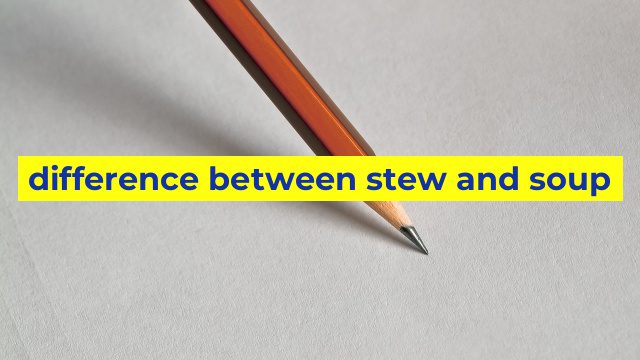The Difference Between Stew and Soup: Explained
When the weather gets colder, there’s nothing like settling down to a piping hot bowl of something comforting. But if you’re in the mood for a savory, hearty meal, how do you know whether to make stew or soup?
What is Soup?
Soup is prepared by simmering vegetables, meat, or grains in a liquid (usually water or broth) until the ingredients are tender and the flavors meld together. Soups can be chunky or smooth, spicy or mild, and can be served hot or cold. They’re often served as a starter or as a light meal.
What is Stew?
Stew is a thick, hearty dish that’s similar to soup but contains larger chunks of ingredients that are cooked until tender. Stews are typically made with tougher cuts of meat, like beef or pork, which require longer cooking times to break down the connective tissue and become tender. Unlike soup, stew is served as a main course.
The Main Differences
The main difference between soup and stew is the texture and consistency. Soup is typically thinner and smoother than stew, while stew is thick and chunky. Stew is also cooked for a longer period of time to allow the meat to become tender and the flavors to develop. In addition, soup is often served as a light meal or appetizer, while stew is typically the main course.
Another key difference is in the preparation of the ingredients. For soup, the vegetables and meat are often chopped into small pieces so they can cook quickly and evenly. For stew, the ingredients are typically cut into larger, more uniform pieces so they can simmer together for a longer period of time.
Final Thoughts
Whether you’re in the mood for soup or stew, both can be delicious and satisfying. When deciding between the two, think about how hungry you are and what kind of texture and consistency you’re craving. No matter which one you choose, a warm bowl of soup or stew is the perfect way to warm up on a chilly day.
Table difference between stew and soup
Difference Between Stew and Soup
| Stew | Soup | |
|---|---|---|
| Ingredients | Stews are made from chunky pieces of meat or vegetables, and can include grains, legumes, or potatoes. | Soups can include a variety of ingredients, including vegetables, grains, legumes, meats, or fish. They can be smooth or chunky. |
| Consistency | Stews are thick and hearty. | Soups are thinner and more liquid. |
| Cooking Time | Stews require longer cooking time, usually simmered for hours over low heat. | Soups can be cooked for a shorter time, usually about an hour or so. |
| Serving | Stews are often served as a main course, with bread or rice on the side. | Soups can be served as a starter, or as a main dish with bread or crackers. |
| Flavor | Stews have a rich, deep flavor, usually from the long cooking time and use of herbs and spices. | Soups can have a more delicate flavor, and can be seasoned with herbs and spices as well. |
